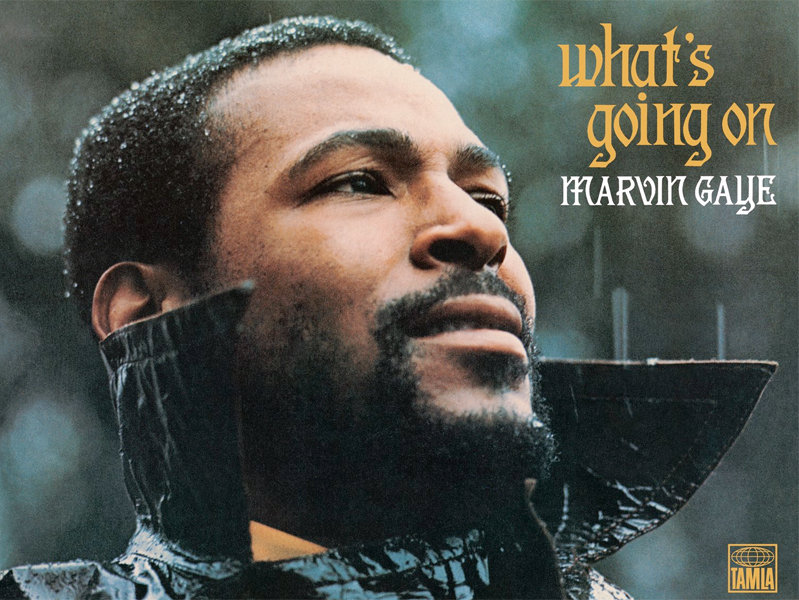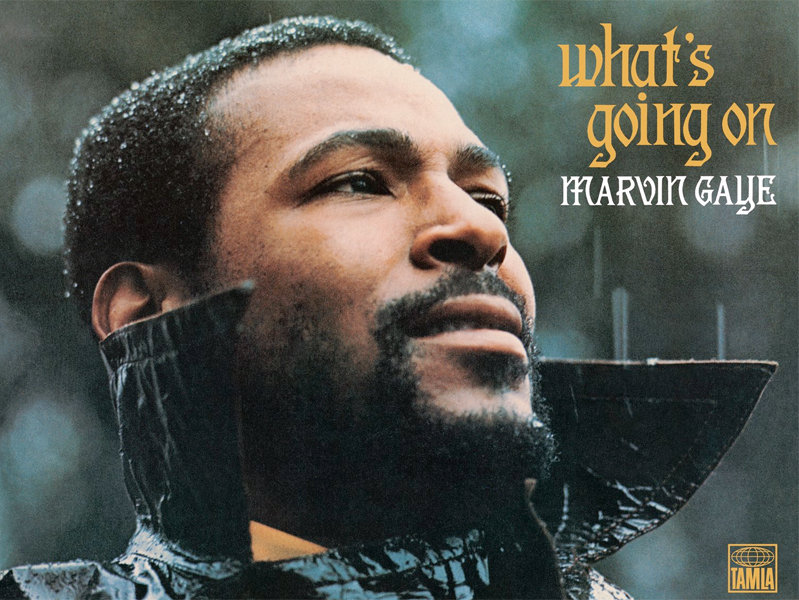Popular songs are more than just background music—we mark the milestones in our lives by the songs we listened to. Here are the stories behind how some of our favorites were created.

Marvin Gaye
SONG: “What’s Going On” (1971)
STORY: By the end of the 1960s, Gaye had become unhappy with the way Motown was treating its artists, and with how it valued commercialism over content. Like a lot of other Americans, Gaye was also feeling disillusioned by the war in Vietnam, so in 1970, when Obie Benson of the Four Tops wrote “What’s Going On” and asked Gaye to record it, Gaye jumped at it—he felt the song perfectly summed up his frustrations. But when they played the record for Motown chief Berry Gordy, Gordy refused to release it, claiming it “wasn’t commercial enough.” In protest, Gaye refused to record any more songs until “What’s Going On” was released as a single. After a few tense weeks, Gordy relented. Good move: In January 1971, “What’s Going On” hit the Top 5. Suddenly, of course, Gordy was all for Motown’s music having a message, and Gaye recorded the rest of the songs for soul music’s first concept album, written from the point of view of a Vietnam veteran (based on letters Gaye received from his brother, who was serving in the war). The album sold two million copies in 1971—Gaye’s biggest success to date— and ushered in a decade of socially themed soul music.
U2
SONG: “Where the Streets Have No Name” (1987)
STORY: This song took so long to record, and caused so much strife between the band and producer Brian Eno, that the track almost never saw the light of day. Eno was so frustrated with the band members’ inability to agree on the melody lines and instrument sounds that one day he threatened to erase all the tapes— three weeks of work—on the theory that they would be better off starting over from scratch. The band had Eno physically restrained and then asked engineer Steve Lillywhite to mix the tapes into the finished track. The song became the third big hit off their album The Joshua Tree, reaching #4 on the U.K. charts in 1987. So exactly where are those no-named streets? The prevailing theory: Africa. Bono traveled to Ethiopia in 1985, and the impact the trip made on him found its way into many U2 songs. “The spirit of the people was very strong,” he recalled. “There’s no doubt that, even in poverty, they had something we didn’t have. When I got back, I realized the extent to which the people in the West were like spoiled children.” But when U2 performs the song onstage, Bono usually dedicates it to his love of God, leading many to believe that the place “where the streets have no name” is actually Heaven. Bono has never stated specifically where the streets are, but he has said where they’re not. “In Belfast (Ireland), you can almost tell what the people are earning by the name of the street they live on and what side of that street they live on. That said something to me, and so I started writing about a place where the streets have no name.”
Nirvana
SONG: “Smells Like Teen Spirit” (1991)
STORY: Before Nirvana frontman Kurt Cobain fell for Courtney Love, he dated Tobi Vail, drummer of Bikini Kill, for a while in 1991. But she eventually lost interest in the troubled rocker and broke it off. One night, one of Vail’s bandmates, Kathleen Hanna, was hanging out at Cobain’s apartment, listening to him lament the break-up. At some point she grabbed a can of spray paint and scrawled the words, “Kurt smells like Teen Spirit” on Cobain’s wall.
(Teen Spirit was an underarm deodorant that Vail wore, and her scent was still lingering on Cobain.) The phrase immediately struck him and provided the inspiration for what he later called “the ultimate pop song.” “Smells Like Teen Spirit” became the first big hit from Nirvana’s seminal album, Nevermind. It reached #6 on the Billboard charts and has since been called the anthem of a generation. Ironically, Cobain later admitted that he didn’t know that Teen Spirit was a deodorant until after the song was released—he would have never knowingly put the name of a mass-produced product for teenagers into the title of one of his songs.









